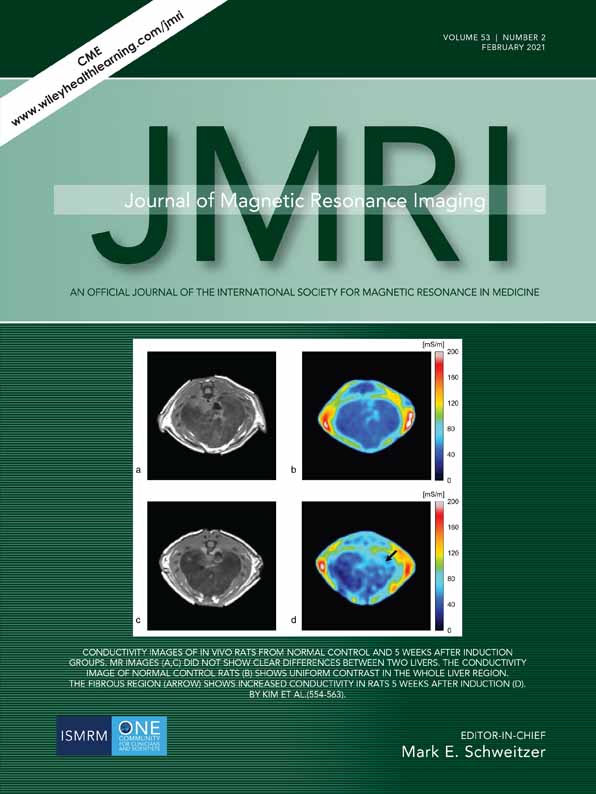In Vivo Proton Exchange Rate (kex) MRI for the Characterization of Multiple Sclerosis Lesions in Patients
Contract grant sponsor: National Institutes of Health; Contract grant numbers: R21EB023516, R01AG061114, R21AG053876; Contract grant sponsor: National Natural Science Foundation of China; Contract grant number: 81401390.
Abstract
Background
Currently available radiological methods do not completely capture the diversity of multiple sclerosis (MS) lesion subtypes. This lack of information hampers the understanding of disease progression and potential treatment stratification. For example, inflammation persists in some lesions after gadolinium (Gd) enhancement resolves. Novel metabolic and molecular imaging methods may improve the current assessments of MS pathophysiology.
Purpose
To compare the in vivo proton exchange rate (kex) MRI with Gd-enhanced MRI for characterizing MS lesions.
Study Type
Retrospective.
Subjects
Sixteen consecutively diagnosed relapsing-remitting multiple sclerosis (RRMS) patients.
Field Strength/Sequence
3.0T MRI with T2-weighted imaging, postcontrast T1-weighted imaging, and single-slice chemical exchange saturation transfer imaging.
Assessment
MS lesions in white matter were assessed for Gd enhancement and kex elevation compared to normal-appearing white matter (NAWM).
Statistical Tests
Student's t-test was used for analyzing the difference of kex values between lesions and NAWM, with statistical significance set at 0.05.
Results
Of all 153 MS lesions, 78 (51%) lesions were Gd-enhancing and 75 (49%) were Gd-negative. Without exception, all 78 Gd-enhancing lesions showed significantly elevated kex values compared to NAWM (924 ± 130 s–1 vs. 735 ± 61 s–1, P < 0.05). Of 75 Gd-negative lesions, 18 lesions (24%) showed no kex elevation (762 ± 29 s–1 vs. 755 ± 28 s–1, P = 0.47) and 57 (76%) showed significant kex elevation (950 ± 124 s–1 vs. 759 ± 48 s–1, P < 0.05) compared to NAWM. MS lesions with kex elevation appeared nodular (118, 87.4%), ring-like (15, 11.1%), or irregular-shaped (2, 1.5%).
Data Conclusion
For Gd-enhancing lesions, kex MRI is highly consistent with Gd-enhanced images by showing 100% of elevated kex. For all Gd-negative lesions, the discrepancy on kex MRI may further differentiate active slowly expanding lesions or chronic inactive lesions, supporting kex as an imaging biomarker for tissue oxidative stress and inflammation.
Level of Evidence 2
Technical Efficacy Stage 3
J. MAGN. RESON. IMAGING 2021;53:408–415.




